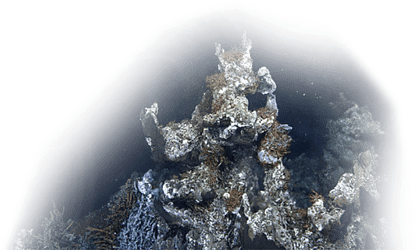With media coverage of the recent earthquakes in Italy (M6.6), New Zealand (M7.8), Japan (M6.9), and Papua New Guinea (M7.9), you might be wondering whether earthquake activity is increasing. Long-term earthquake statistics in the last 12 months indicate that it was an average year: there were no earthquakes of M8.0 or higher (one M8.0+ is the annual average) and 19 earthquakes with M7.0 - 7.9 (17 is the annual average). These statistics (Figure 1) show that earthquake activity is not increasing.
Figure 1: Annual global earthquakes by magnitude, based on USGS statistics.
When the media focuses attention on something, such as the recent earthquakes in Italy, it’s easy to believe that there’s simply more of it about. This is called a spotlight fallacy, which contributes to the impression that earthquakes are on the rise. In fact, there have been almost 40 quakes of M6.6 or greater in the last year, but most of them did not create as much damage, nor did they receive as much attention.
Similarly, we are also susceptible to the clustering illusion. Our logical brains are wired to seek meaning in clusters or “streaks”, even if the occurrence is totally random. When in doubt, turn to scientific facts—especially during the post-truth era.
Earthquake Facts
- A measureable earthquake takes place every 3-4 minutes somewhere on Earth.
- Approximately 500,000 earthquakes are detected every year. This animation shows every recorded earthquake in sequence as they occurred from 1 January 2001 to 31 December 2015.
- Magnitude and Intensity measure different characteristics of earthquakes. Magnitude indicates the energy released at the source of the earthquake and is measured by seismographs. Intensity indicates the strength of shaking produced by the earthquake at a certain location and is determined from the effects on people, human structures, and the natural environment (USGS).
- Recent earthquakes around the world can be explored using the Ocean Networks Canada’s (ONC) interactive earthquake data dashboard (Figure 2). The dashboard includes selected earthquakes that are likely to have been recorded on ONC sensors.
Figure 2: ONC earthquake data dashboard.
- The largest earthquake recorded by modern instruments happened in Chile on 22 May 1960 (M9.5).
- The deadliest earthquake on record struck Shansi, China on 23 January 1556. An estimated 830,000 people died.
- The Pacific northwest is host to three kinds of tectonic earthquakes: M9.0 Cascadia megathrust quakes, M6.5 to 7 deep earthquakes, and shallow crustal-fault earthquakes up to M7.5.
- A megathrust earthquake is caused by a sudden slip on the fault between two tectonic plates (Figure 3) when one is forced under the other. On Canada’s west coast for example, the Juan de Fuca plate (Figure 4) is moving eastward underneath the North America plate at a rate of a few centimetres per year.
Figure 3: Global tectonic plates were mapped in the second half of the 20th century. (Image credit: Wikipedia)
- Megathrust earthquakes tend to occur in the Pacific northwest region approximately every 300-500 years.
- The last megathrust subduction earthquake to occur along the Cascadia subduction zone happened on 26 January 1700. The magnitude was estimated as 9.0, resulting in a tsunami that was recorded in Japan. Evidence of this earthquake is confirmed by geological evidence (land level changes, tsunami traces, turbidite deposits), biological evidence (tree rings), and human records (Indigenous stories and Japanese records). Find out more.
Figure 4: The Cascadia Subduction Zone, where the Juan de Fuca plate is forced under the continental North America Plate. (Image credit: USGS).
- In collaboration with the Government of British Columbia, ONC is developing an earthquake early warning system (Figure 5) to alert British Columbians in advance of an earthquake. There are currently no known means to reliably predict earthquakes, however seismic instruments can rapidly detect an earthquake as it begins to unfold and communicate a warning up to 90 seconds before shaking arrives.
Figure 5: Earthquakes release energy that travels through the Earth as seismic waves. Primary or ‘P’ waves travel faster than secondary or ‘S’ waves that cause damaging ground shaking. It is the ability to detect these first ‘P-waves’ that enables earthquake early warning systems to deliver alerts before the arrival of the ‘S-waves’.
Related posts:
- Deployed: the first spike for British Columbia's earthquake early warning system
- Making progress on earthquake early warning
- Ocean Networks Canada to coordinate earthquake early warning system for B.C.
- January quakes cause jitters in British Columbia
- Video: The Big Earthquake in BC: Are we prepared?
- Podcast: Fault Lines by CBC Vancouver Seismologist Johanna Wagstaffe
